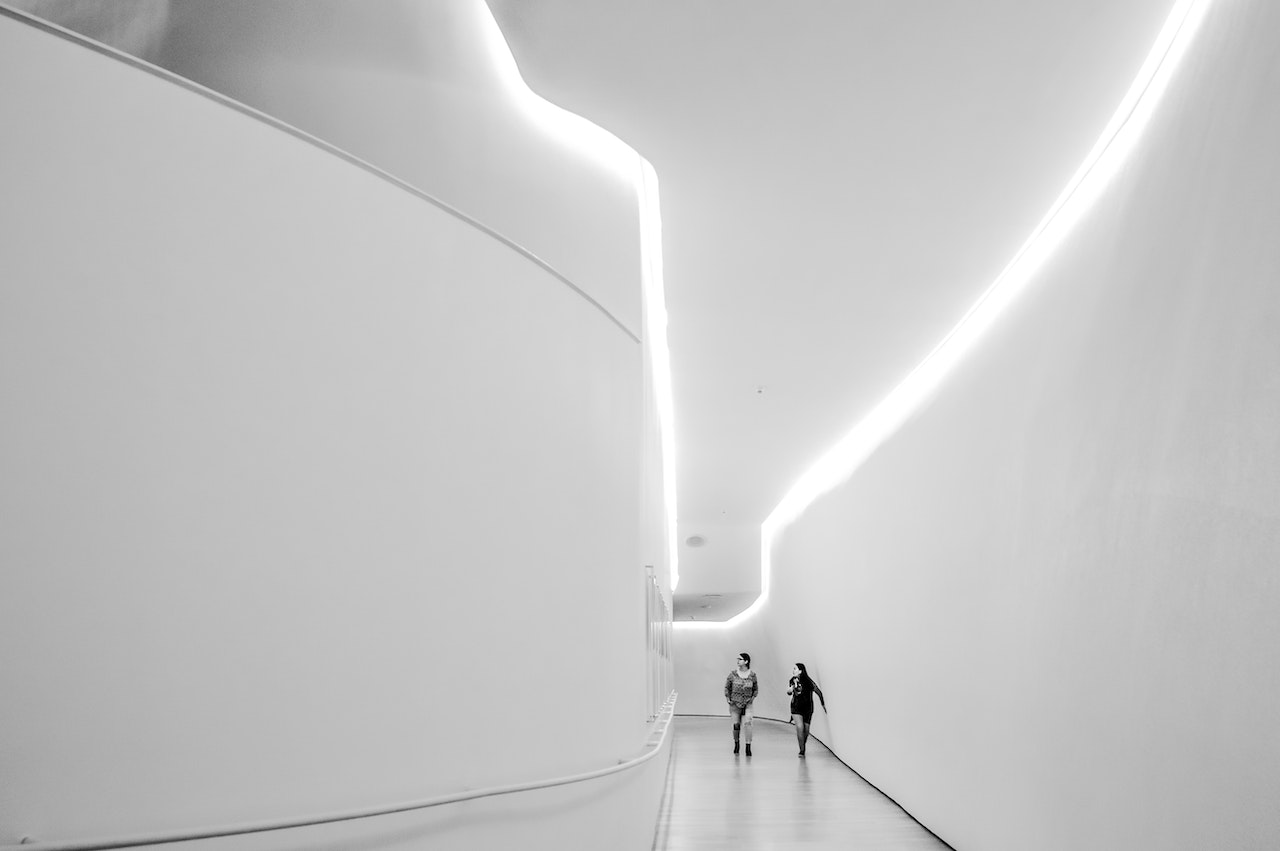The Evolution Of Residential Architecture And Its Impact On Modern Living
The evolution of residential architecture and its impact on modern living has undergone over the centuries, reflecting changes in lifestyle, technology, and cultural norms. Today's homes are vastly different from the homes of the past, with modern designs emphasizing open spaces, energy efficiency, and sustainability.
Author:George EvansMar 17, 202395.6K Shares1.4M Views

The evolution of residential architecture and its impact on modern livinghas undergone over the centuries, reflecting changes in lifestyle, technology, and cultural norms.
Today's homes are vastly different from the homes of the past, with modern designs emphasizing open spaces, energy efficiency, and sustainability. In this article, we will explore the history of residential architectureand how it has influenced modern living.
The Evolution Of Residential Architecture
The evolution of residential architecture has been a long and fascinating journey, spanning thousands of years and numerous cultures.
From the humble mud huts of our prehistoric ancestors to the modern, high-tech homes of today, residential architecture has undergone countless transformations, each one shaped by the needs and desires of the people who live in them.
Prehistoric Homes
The earliest known homes were caves and natural rock shelters that protected them from the elements. As human societies evolved, people began to construct more elaborate homes using materials such as mud, grass, and animal hides.
The first permanent homes were built by Neolithic peoples around 10,000 BCE. These homes were typically circular or rectangular, made of mud or stone, and had thatched roofs.
Ancient Homes
The ancient Egyptians built homes using sun-dried mud bricks, while the ancient Greeks used stone and timber. The Romans are known for their sophisticated housing designs, which included atriums, courtyards, and gardens.
In Asia, traditional Japanese homes were characterized by low-slung roofs, sliding doors, and a minimalist aesthetic.
Medieval Homes
During the Middle Ages, homes were built using local materials such as stone, timber, and thatch. Medieval homes were often multi-purpose structures, serving as both a home and a workspace. The design of these homes varied greatly depending on the region and the social status of the occupants.
Renaissance Homes
The Renaissance saw a renewed interest in classical architecture, with homes featuring classical elements such as columns, arches, and domes. Homes of the wealthy were often built with elaborate gardens, fountains, and sculptures.
Colonial Homes
Colonial architecture in the Americas was heavily influenced by European styles, particularly those of England, France, and Spain. Colonial homes were typically constructed using local materials such as wood and brick, and often featured symmetrical designs, pitched roofs, and decorative shutters.
Victorian Homes
The Victorian era saw a proliferation of ornate, decorative homes characterized by turrets, spires, and intricate detailing. Victorian homes were built using a variety of materials, including brick, stone, and wood. The design of these homes was often dictated by social status, with wealthy homeowners building larger, more ornate homes.
Modern Homes
In the 20th century, architects began to experiment with new materials and designs, resulting in a wide range of modern homes. Modern homes are characterized by clean lines, open spaces, and the use of industrial materials such as steel and concrete.
The mid-century modern movement, popularized in the 1950s and 60s, emphasized simplicity and functionality, with homes featuring large windows, flat roofs, and open floor plans.
Contemporary Homes
Contemporary homes continue to push the boundaries of residential architecture, with a focus on energy efficiency, sustainability, and technology. Contemporary homes often feature eco-friendly materials such as recycled wood and concrete, as well as smart home technology that can be controlled from a smartphone or tablet.
The Evolution Of Residential Architecture And Its Impact On Modern Living
Residential architecture has a significant impact on the way we live our lives. The design of our homes can affect our mood, productivity, and overall well-being. Here are some ways in which residential architecture has influenced modern living:
Open Floor Plans
One of the defining features of modern homes is the open floor plan, which combines multiple living spaces into one large area. Open floor plans encourage social interaction and make it easier for families to spend time together. They also allow for more natural light to enter the home, creating a brighter, more welcoming atmosphere.
Energy Efficiency
Many modern homes are designed with energy efficiency in mind, with features such as solar panels, high-efficiency heating and cooling systems, and insulated walls and windows.
These features not only help to reduce our carbon footprint and save money on utility bills, but they also create a more comfortable living environment by maintaining a consistent temperature and reducing drafts and noise.
Sustainability
Sustainable design is another important aspect of modern residential architecture. This can include the use of recycled or reclaimed materials, such as reclaimed wood floors or countertops made from recycled glass.
Additionally, many modern homes are designed with features that promote sustainable living, such as rainwater harvesting systems, composting toilets, and edible gardens.
Technology
The integration of technology into modern homes has had a profound impact on modern living. Smart home technology, such as thermostats, lighting, and security systems that can be controlled from a smartphone or tablet, have made homes more convenient and efficient.
Additionally, technology such as home automation systems and voice-activated assistants have made it easier for homeowners to manage their homes and accomplish everyday tasks.
Wellness
The design of a home can also have a significant impact on our physical and mental well-being. Many modern homes are designed with features that promote health and wellness, such as natural light, indoor air quality systems, and biophilic designelements that incorporate nature into the home. These features can help to reduce stress, improve mood, and promote better sleep.

Why we need to rethink how we build homes | Ged Finch | TEDxWellington
Adaptability
Finally, modern homes are often designed with adaptability in mind. As our lives change and our needs evolve, our homes need to be able to adapt to accommodate these changes.
Modern homes often feature flexible living spaces that can be easily reconfigured to meet changing needs, such as home offices that can double as guest rooms, or spaces that can be converted into a rental units to generate additional income.
People Also Ask
What Is The Earliest Known Example Of Residential Architecture?
The earliest known examples of residential architecture date back to the Stone Age, when our ancestors lived in caves and temporary shelters made of sticks and animal hides.
What Were The Materials Used For Building Permanent Structures In Prehistoric Times?
In prehistoric times, people built more permanent structures out of materials such as mud, stone, and wood.
What Characterized Residential Architecture During The Ancient Period?
Ancient civilizations such as the Egyptians, Greeks, and Romans built grand palaces, temples, and villas, with ornate decorations and intricate details that reflected their wealth and power.
What Was The Focus Of Residential Architecture During The Renaissance Period?
The Renaissance period marked a return to the classical styles of ancient Greece and Rome, with a renewed focus on symmetry, proportion, and balance.
Conclusion
The evolution of residential architecture and its impact on modern living has come a long way since the prehistoric era, with each period of history leaving its mark on the way we design and live in our homes.
Today's homes are designed with a focus on sustainability, energy efficiency, and technology, as well as promoting health and wellness. As we continue to evolve as a society, so too will our homes, adapting to meet our changing needs and desires.

George Evans
Author
George Anderson, an exceptional architectural designer, envisions and brings to life structures that transcend the realm of imagination. With an unwavering passion for design and an innate eye for detail, George seamlessly blends form and function, creating immersive spaces that inspire awe.
Driven by a deep appreciation for the interplay of space, light, and materials, George's innovative approach redefines the possibilities of architectural design. His visionary compositions leave an indelible mark, evoking a sense of wonder and transforming the built environment.
George Anderson's transformative designs and unwavering dedication continue to shape the architectural landscape, pushing the boundaries of what is possible and inspiring generations to come.
Latest Articles
Popular Articles
